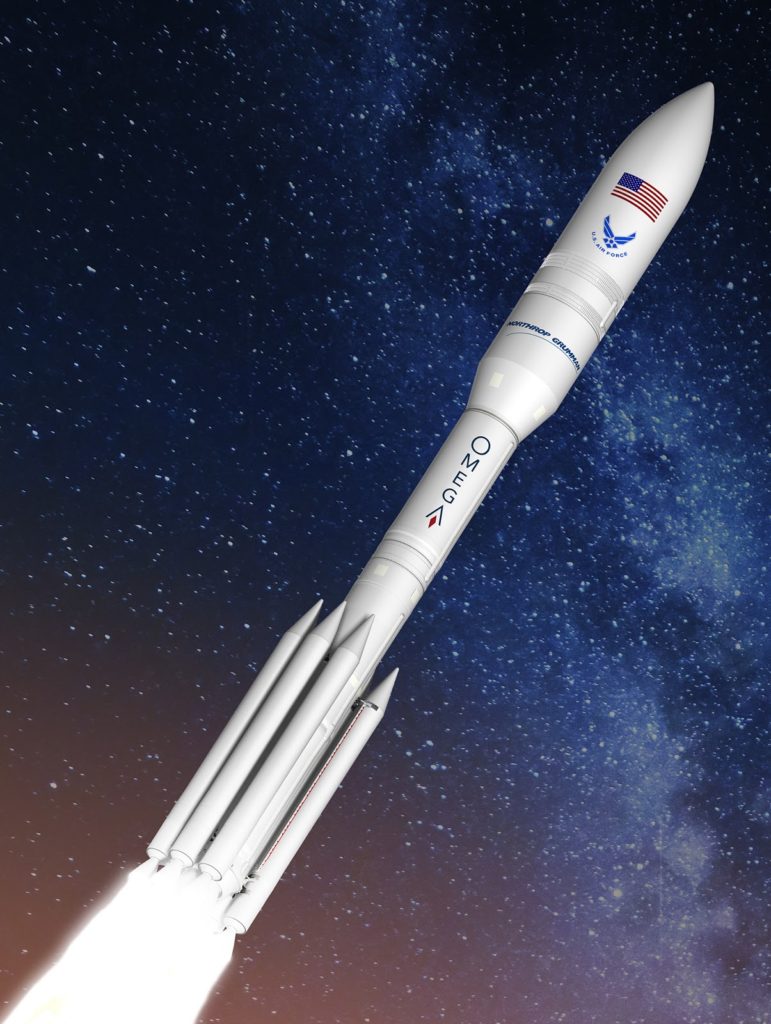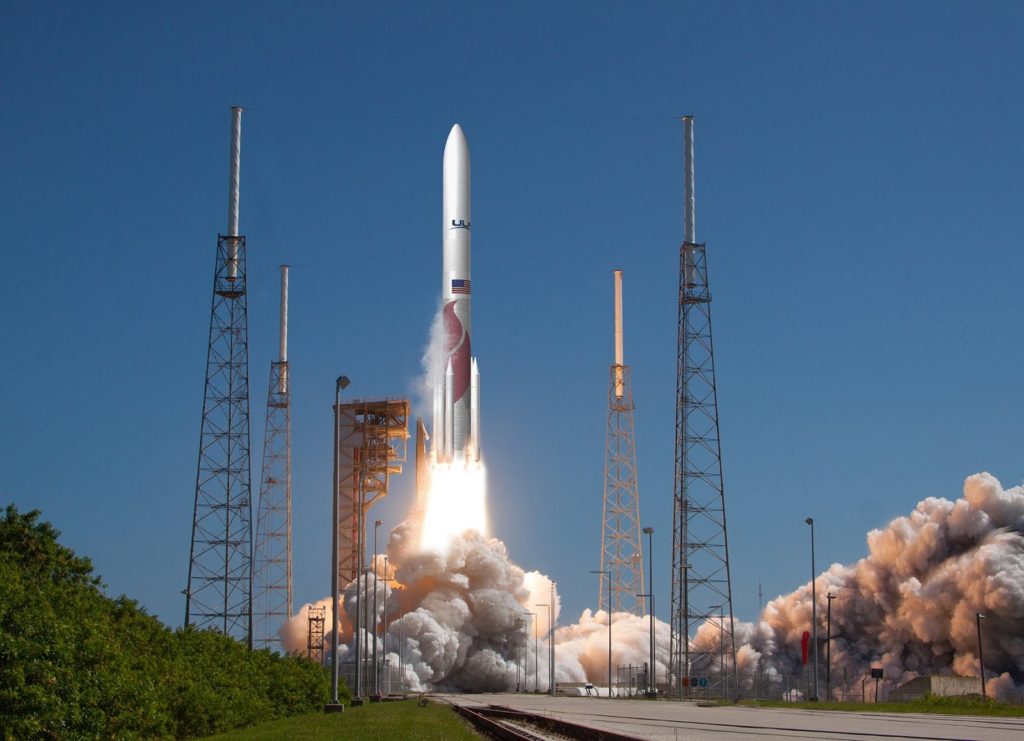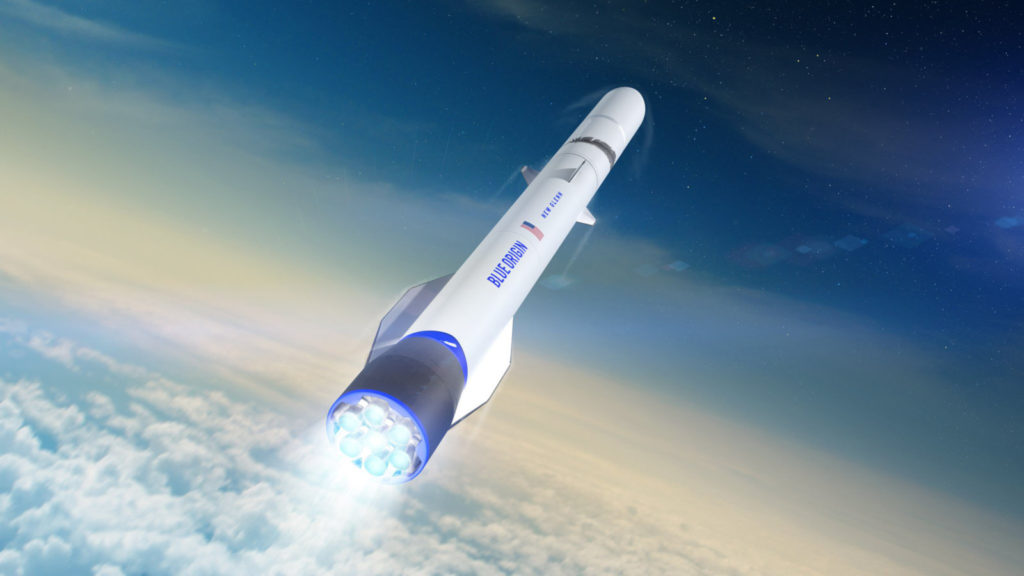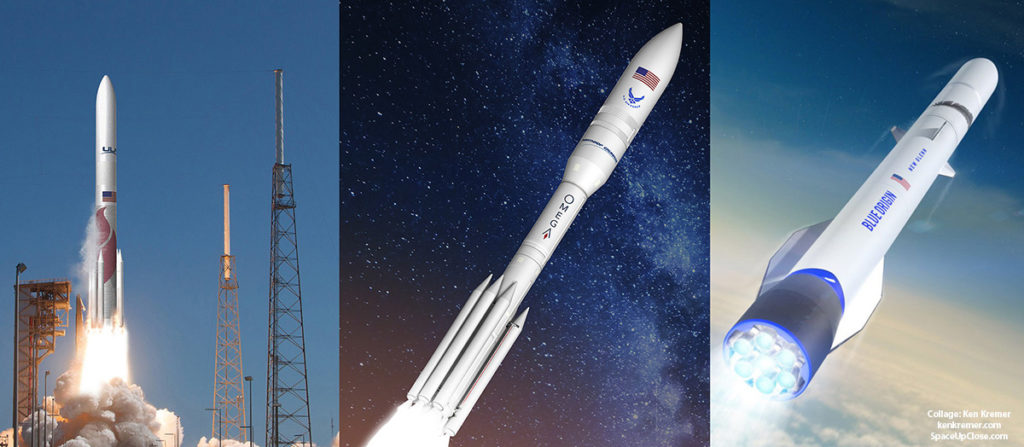Ken Kremer — SpaceUpClose.com — 12 October 2018
CAPE CANAVERAL,
FL – The
U.S. Air Force announced a trio of contracts to develop rocket prototypes for future
National Security Space launches to United Launch Alliance, Northrop Grumman and
Blue Origin worth more than $2 Billion under a Launch Service Agreements competition.
The USAF revealed the winners of “the award of three Evolved Expendable Launch Vehicle (EELV)
Launch Service Agreements (LSA) to (in alphabetical order) Blue Origin, Northrop
Grumman Innovation Systems, and United Launch Alliance,” in a statement issued
Oct. 10.
To
most everyone’s surprise SpaceX was not awarded an LSA contract.
Under the Launch Service
Agreement awards Blue Origin will develop the New Glenn Launch System, Northrop
Grumman Innovation Systems will develop the OmegA Launch System and United
Launch Alliance (ULA) will develop the Vulcan Centaur Launch System.
As to why SpaceX was not
selected, the fact is they already have developed and received USAF launch
contracts for the Falcon 9 and Falcon Heavy and may not need the additional LSA
contract funding.
The purpose of LSA is to insure
competition with at two launch service providers, cut costs and end US reliance
on the Russian-made RD-180 engines for national security launches – as is the
case currently with the ULA Atlas V.
The LSA awards start now in Fiscal
Year 2018 and run through 2024 – under what is known in Air Force parlance as Other
Transaction Authority (OTA) for prototype projects.
ULA received the largest share of the OTA
funding amounting to $967 million. Next
is $792 million for Northrop Grumman and finally $500 million for Blue Origin.
The awards are to develop
rocket prototypes for each of the three launch systems currently being actively
developed by all three of the aerospace companies for several years with both government
and company funding.
The LSA agreement enables
each company to continue Research & Development efforts via public-private partnership agreements.
In 2020 the Air Force
will down select to two companies and thereby terminate funding to the third –
leaving them to fend for themselves if they wish to continue R & D minus government
help.
“The Launch Service Agreements
will facilitate the development of three domestic launch system prototypes and
enable the future competitive selection of two National Security Space launch
service providers for future procurements, planned for no earlier than fiscal
year 2020,” said the Air Force.
The goal of the LSA strategy is
“ensuring that the U.S. maintains assured access to space, with at least two
domestic launch service providers and without reliance on non-allied rocket
propulsion systems” – which translates as the RD-180.
“Our launch program is a
great example of how we are fielding tomorrow’s Air Force faster and
smarter,” said Secretary of the Air Force Heather Wilson, in the USAF
statement.
“We’re making the most of the
authorities Congress gave us and we will no longer be reliant on the
Russian-built RD-180 rocket engine.”
 |
|
Northrop
Grumman OmegA Launch System was one of three companies awarded USAF contracts to develop prototype rockets for National Security Space launches. Credit: Northrop Grumman |
the Vulcan Centaur since 2014 and CEO Tory Bruno recently announced the selection of the
Blue Origin BE-4 engine to power the first stage – as we reported here.
First launch is expected in 2020.
 |
|
ULA
Vulcan Centaur was one of three companies awarded USAF contracts to develop prototype rockets for National Security Space launches. Credit: ULA |
for your confidence in the @BlueOrigin team and our #NewGlenn
rocket,” tweeted Blue Origin founder and owner billionaire Jeff Bezos.
“We are proud to serve the national
security space community and are committed to providing safe, reliable access
to space for the nation.”
 |
|
Blue
Origin New Glenn was one of three companies awarded USAF contracts to develop prototype rockets for National Security Space launches. Credit: Blue Origin |
Air Force,” said Scott Lehr, president, flight systems, Northrop Grumman. “Our
new OmegA rocket leverages technologies, capabilities and flight experience
gained from decades of successful rocket launches, making it an affordable and
reliable choice for national security missions.”
“Over the last three years, Northrop Grumman and the U.S.
Air Force have together invested more than $300 million in developing the OmegA
rocket.
launch in 2021.
lift versions including for test flight in 2021 and 2024 [respectively],” said Mike Laidley, vice president of the
OmegA program at Northrop Grumman, in an interview with Space UpClose.
Northrop Grumman.
continuing onsite coverage of NASA, SpaceX, ULA, Boeing, Lockheed Martin,
Orbital ATK and more space and mission reports direct from the Kennedy Space
Center, Cape Canaveral Air Force Station, Florida and Wallops Flight Facility,
Virginia.
Stay tuned here for Ken’s continuing Earth and Planetary science
and human spaceflight news: www.kenkremer.com –www.spaceupclose.com –
twitter @ken_kremer – email: ken at kenkremer.com
scientist and journalist based in the KSC area
.………….
Ken’s photos are for sale and he is available for lectures and outreach events
sale:
Oct 13, 15-17: Learn more about the Soyuz abort and upcoming
upcoming/recent ULA/USAF AEHF-4 milsatcom, NASA/ULA Parker Solar Probe, SpaceX
Merah Putih & Telstar 18 & 19 launches, SpaceX Falcon 9/CRS-15 launch
to ISS, Falcon Heavy, NASA TESS, GOES-S, NASA missions, ULA Atlas &
Delta launches, SpySats and more at Ken’s upcoming outreach events at Kennedy
Space Center Quality Inn, Titusville, FL, evenings. Photos for sale


